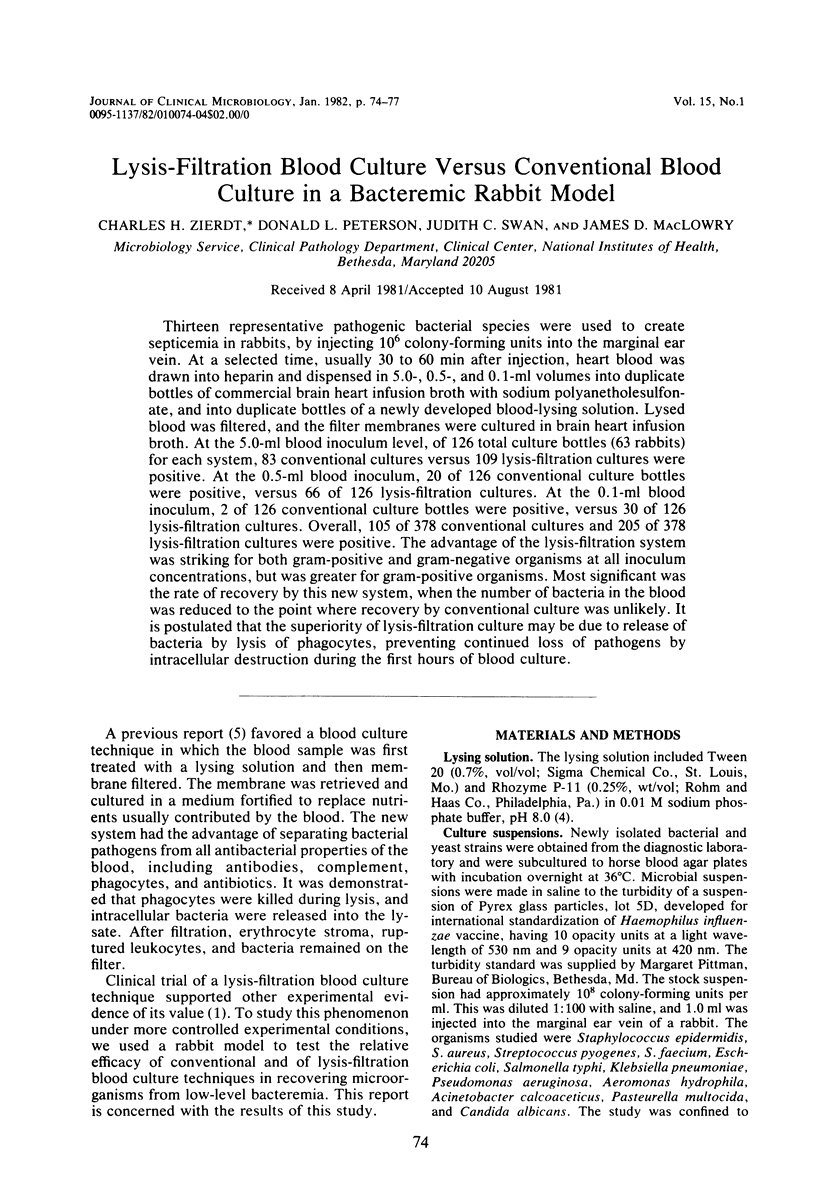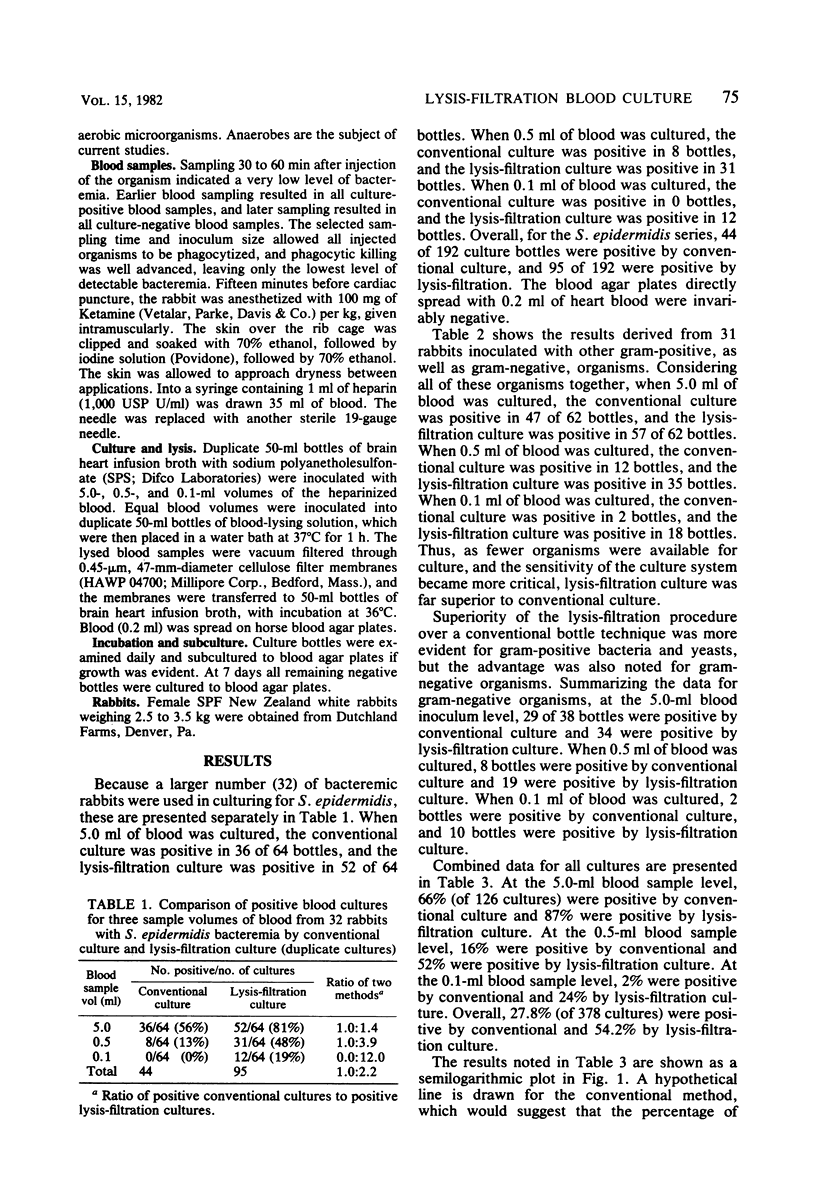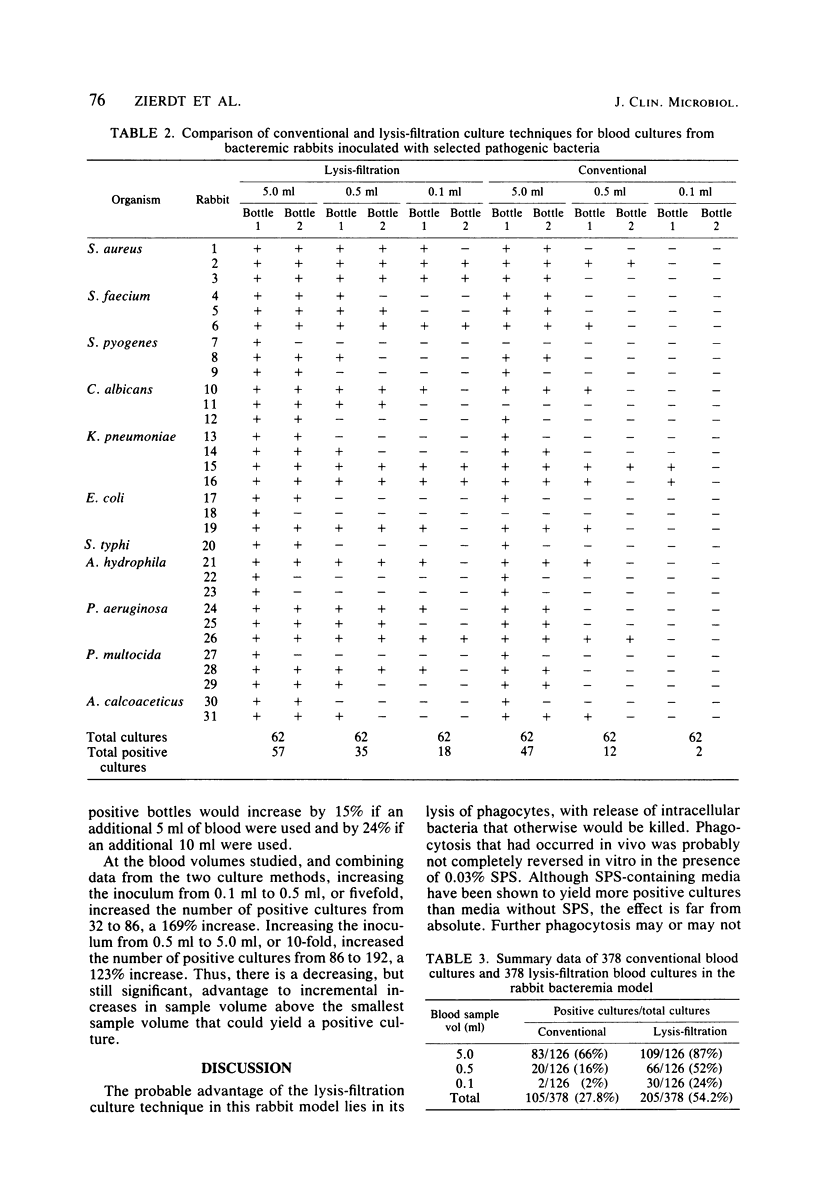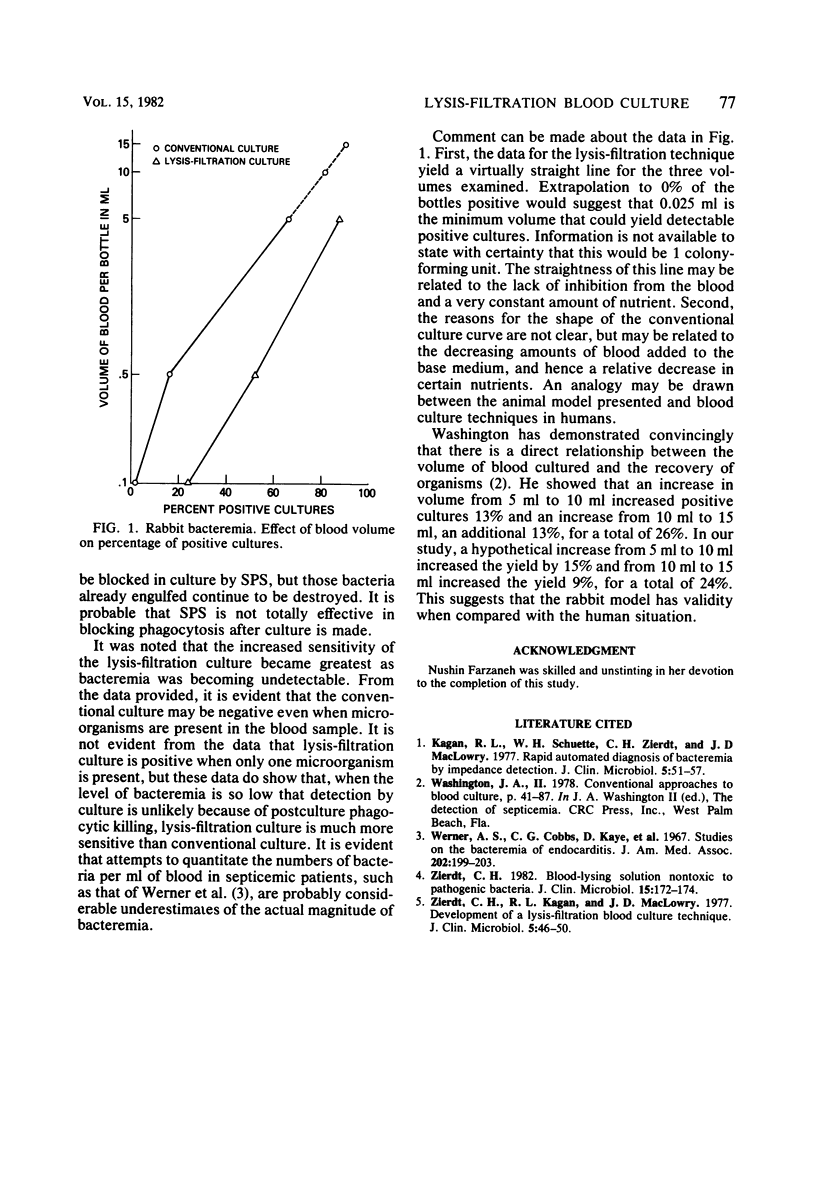Abstract
Thirteen representative pathogenic bacterial species were used to create septicemia in rabbits, by injecting 10(6) colony-forming units into the marginal ear vein. At a selected time, usually 30 to 60 min after injection, heart blood was drawn into heparin and dispensed in 5.0-,0.5-, and 0.1-ml volumes into duplicate bottles of commercial brain heart infusion broth with sodium polyanetholesulfonate, and into duplicate bottles of a newly developed blood-lysing solution. Lysed blood was filtered, and the filter membranes were cultured in brain heart infusion broth. At the 5.0-ml blood inoculum level, of 126 total culture bottles (63 rabbits) for each system, 83 conventional cultures versus 109 lysis-filtration cultures were positive. At the 0.5-ml blood inoculum, 20 of 126 conventional culture bottles were positive, versus 66 of 126 lysis-filtration cultures. At the 0.1-ml blood inoculum, 2 of 126 conventional culture bottles were positive, versus 30 of 126 lysis-filtration cultures. Overall, 105 of 378 conventional cultures and 205 of 378 lysis-filtration cultures were positive. The advantage of the lysis-filtration system was striking for both gram-positive and gram-negative organisms at all inoculum concentrations, but was greater for gram-positive organisms. Most significant was the rate of recovery by this new system, when the number of bacteria in the blood was reduced to the point where recovery by conventional culture was unlikely. It is postulated that the superiority of lysis-filtration culture may be due to release of bacteria by lysis of phagocytes, preventing continued loss of pathogens by intracellular destruction during the first hours of blood culture.
Full text
PDF



Selected References
These references are in PubMed. This may not be the complete list of references from this article.
- Kagan R. L., Schuette W. H., Zierdt C. H., MacLowry J. D. Rapid automated disgnosis of bacteremia by impedance detection. J Clin Microbiol. 1977 Jan;5(1):51–57. doi: 10.1128/jcm.5.1.51-57.1977. [DOI] [PMC free article] [PubMed] [Google Scholar]
- Werner A. S., Cobbs C. G., Kaye D., Hook E. W. Studies on the bacteremia of bacterial endocarditis. JAMA. 1967 Oct 16;202(3):199–203. [PubMed] [Google Scholar]
- Zierdt C. H. Blood-lysing solution nontoxic to pathogenic bacteria. J Clin Microbiol. 1982 Jan;15(1):172–174. doi: 10.1128/jcm.15.1.172-174.1982. [DOI] [PMC free article] [PubMed] [Google Scholar]
- Zierdt C. H., Kagan R. L., MacLowry J. D. Development of a lysis-filtration blood culture technique. J Clin Microbiol. 1977 Jan;5(1):46–50. doi: 10.1128/jcm.5.1.46-50.1977. [DOI] [PMC free article] [PubMed] [Google Scholar]


